September 17, 2021
Trees largely contribute to the value of a landscape, so it’s vital to keep them healthy and know how to prevent common tree diseases in Alberta.
Like other living things, trees are susceptible to infections that affect their productivity or kill them entirely.
Early detection saves many trees, and it’s therefore essential to know how to detect common tree diseases.
This guide discusses the common tree diseases that we see in Alberta, the signs, and how to treat them effectively. Read on:
1. Pine Needle Cast
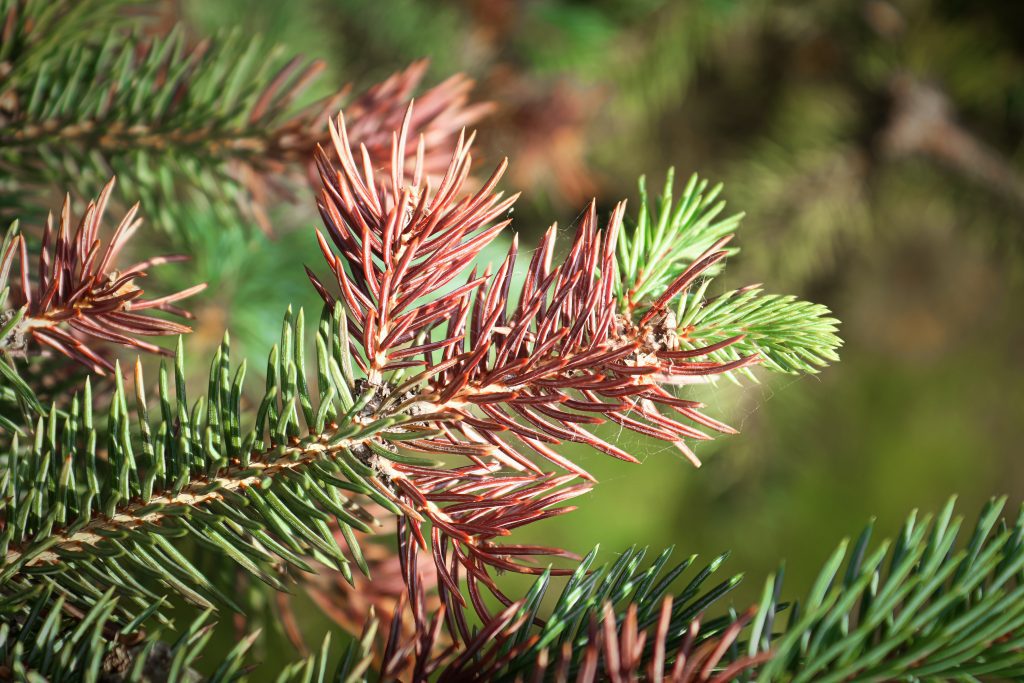
As the name implies, the pine needle cast makes spruce trees shed their old needles at the branch tips, making the entire tree look unattractive.
Signs:
Pine needle cast is a fungal infection. The most notable signs include:
- Red-brown needles
- Small black fungus dots on the stem or leaves
- Dying needles on the lower branches
Treatment
The first step is to call a reliable tree expert for proper diagnosis. The expert should collect a few leaf samples, run a test and help you identify the issue.
From there, you should spray the pine trees with fungicide every month during winter and spring.
Alternate spraying with different active ingredients should provide the best results.
2. Heart Rot Disease
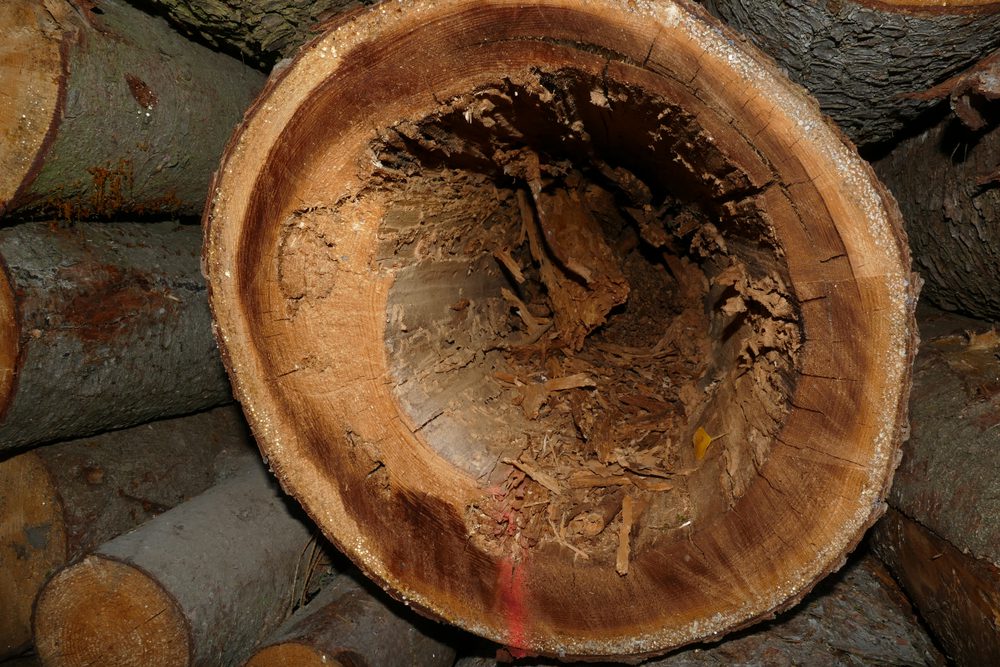
Heart rot is a fungal tree infection that decays the centre of a branch or a trunk.
Usually, the fungus enters the heart (the centre part of the tree) through wounds on the bark.
When the fungi find their way into the tree, they start multiplying in the truck, ingest it and eventually damage it.
Signs
- Visible rot
- Foul smell resulting from the rotten trunk
- Presence of mushrooms around the rot area
Prevention and Control
The best way to prevent this is to minimize the wounds on the tree’s bark.
You should prune properly to avoid exposing the tree to infection. Most importantly, you should provide the tree with proper nutrients to promote its health.
3. Bronze Leaf Disease
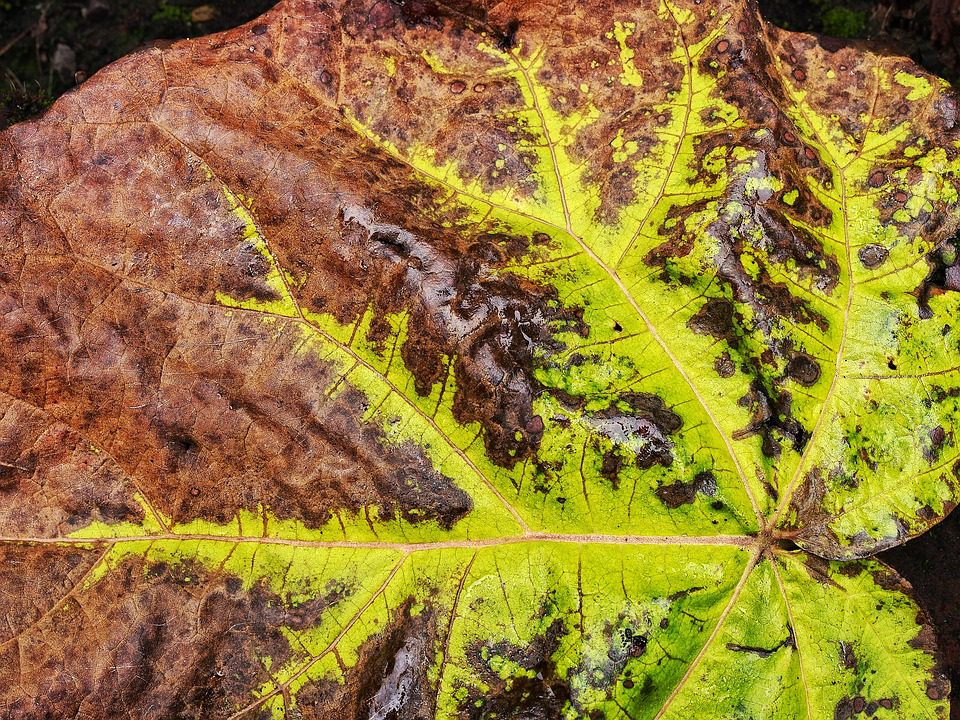
This is another prevalent fungal tree disease that affects the poplar and hybrid trees in Alberta.
Bronze leaf fungus enters the tree through the leaf pores, moves to the branches and then to the trunk.
Eventually, the tree dies because the fungus moves, rotting the tree branches and roots.
Signs
- The infected leaves turn yellowish, reddish or brownish. The veins remain green.
Prevention and Treatment
There is no established treatment option for this type of fungus. The only solution is to cut off or prune the infected parts.
If the disease is extensive, the best solution is to fall the tree.
An effective preventive measure is to regularly check on the trees and ensure they have the proper nutrients.
4. Fire Blight Disease
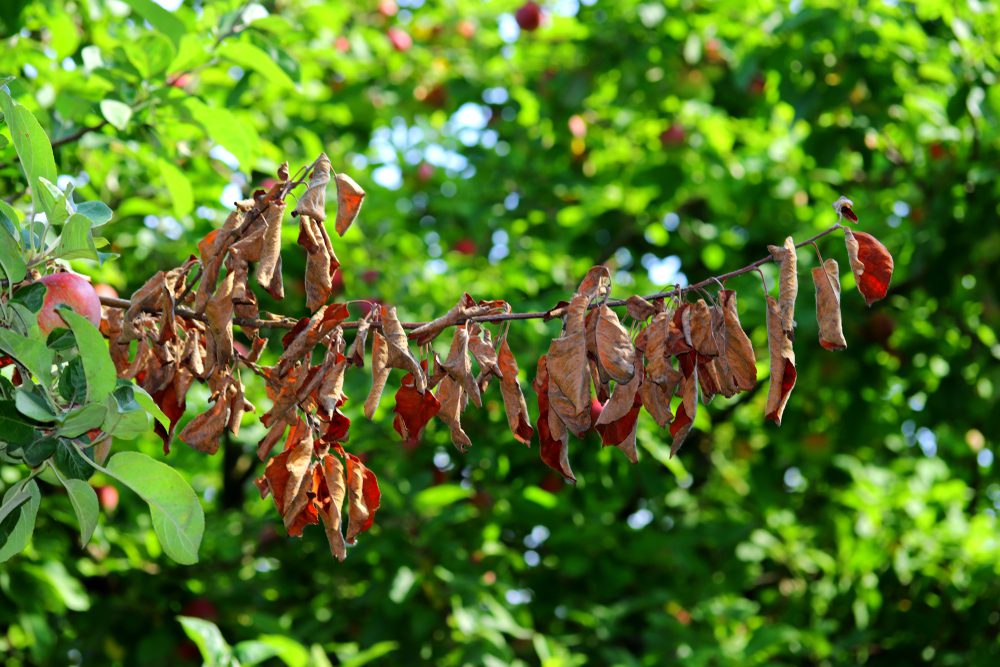
Fire blight affects all parts of the tree. It is a destructive bacterial infection that primarily affects fruit trees such as apple and pear.
The bacteria enter the tree through the leaf edges and then move swiftly to the other parts.
The bacteria first attack the soft leaves, so you can quickly notice it through the newly grown leaves at the top of the tree.
Signs
- Brown or reddish look on the affected leaves or twigs
- Black twigs signifying more spread of the bacteria infection
- Brown and wilt flowers
Prevention and Control
There is no proven treatment for the fire blight infection, although bactericide pesticides such as serenade garden can reduce the effects of the disease.
Here are other preventive measures:
- Avoid planting apples, pears and other trees of the rose family near wild plants
- Avoid heavy use of nitrogen fertilization to prevent the spread of this disease
- Schedule for regular tree inspections to identify the early signs of fire blight
5. Oak Wilt Disease
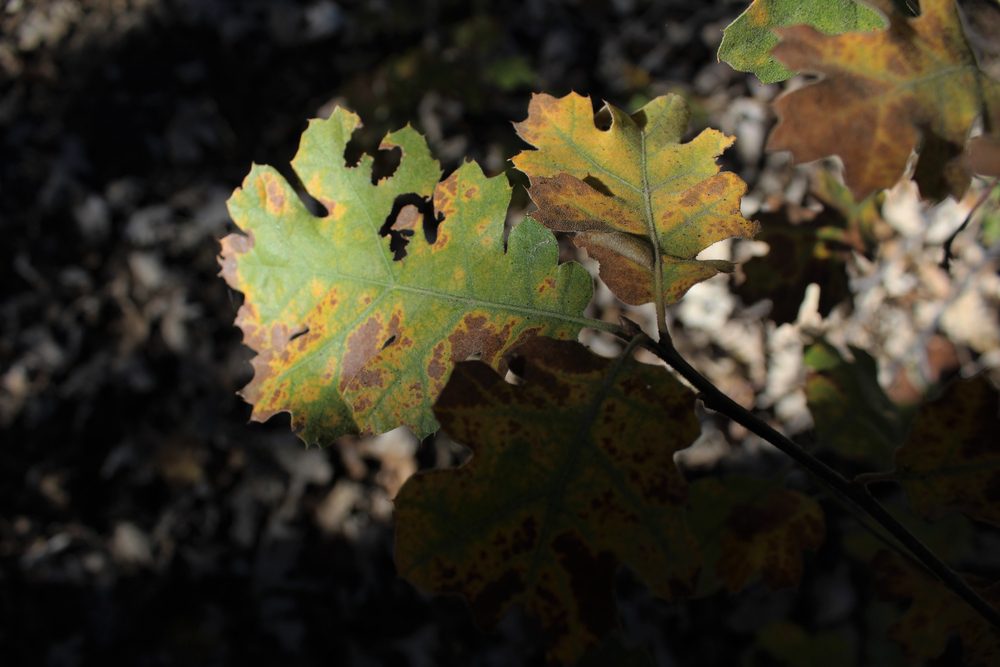
Oak wilt is a fungus vascular tree infection that quickly moves from one infected tree to another.
It mostly attacks members of the oak tree such as the reed, black and live oaks.
Grafting is the leading transmission method, especially when not done well. However, the fungus can find its way to the oak leaves and rapidly move to the other parts of the tree.
Signs
- Affected leaves show a sudden wilting or premature fall
- Most trees die within six weeks due to wilting
- Leaves turn brown
Control and Prevention
Oat wilt resembles other tree diseases, so laboratory testing is vital to confirm the condition.
The disease has no permanent cure, but your arborist can help you with pruning and other management tips.
Other preventive tips are:
- Immediately remove the oak tree, which shows signs of oak wilt, to avoid infecting the rest
- Avoid root grafts with the infected trees
- Remove leaves with open wounds or cover wounds on stems so that they don’t attract the oak wilt fungi
6. Black Knot Disease
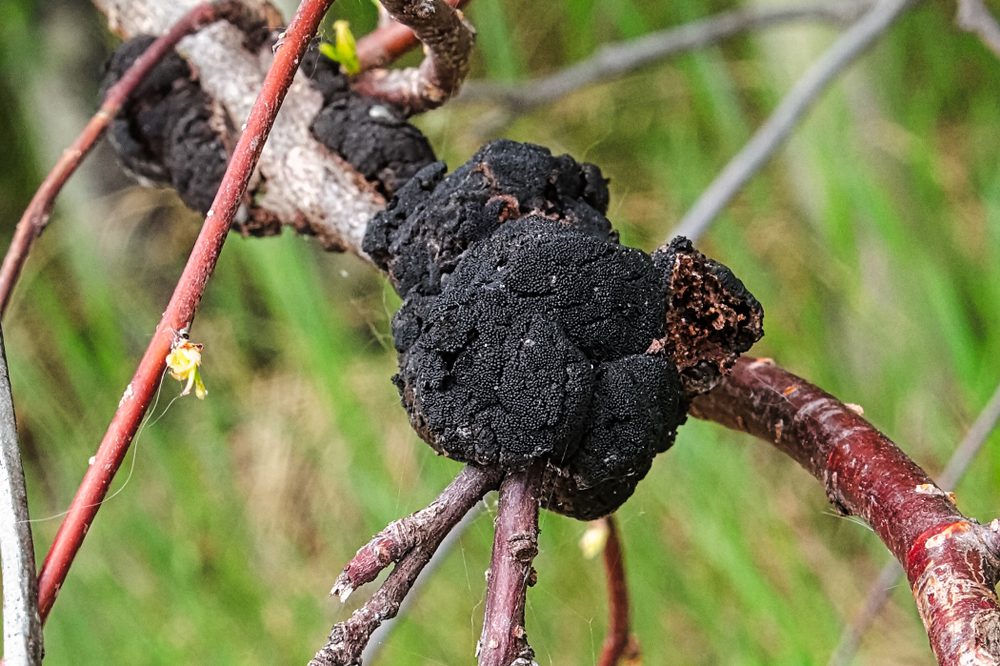
Black knot affects cherry trees and plums. It comes in the form of an enormous black growth on the stem, leaves, or any other visible part of the tree.
Black knot funguses can stay in a tree for more than six months without the tree showing any signs.
During that time, the fungus ingests the tree and releases a chemical that changes the particular part of the tree into large black knots.
Signs
- Swollen growths which appear on the stem, leaves or the bark
- Brown leaves that wilt often
- Possible truck, branch or bark decay as the disease continues to spread
Control and Prevention
- Tree inspection – regularly inspect your trees for a black knot. Call arborists whenever you notice abnormal black growth on the tree
- Pruning – remove the black knot galls by pruning. A certified arborist should only conduct the pruning to avoid mistakes
- Use fungicides – fungicides to protect young trees from multiple tree diseases such as black knots
Maintain Healthy Trees
We cannot underestimate the importance of trees on our property. That’s why you should be keen on the health of your trees to avoid infections.
Don’t hesitate to seek the help of a tree specialist whenever you notice an adverse change in your tree’s appearance.
Tree experts from Pevach Corp will help you in the inspection and identification of tree diseases.
Contact us to come by and give you a quote today!
